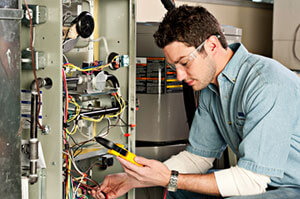The best thermostat for you will depend on your life style and comfort level in varying house temperatures. While automatic and programmable thermostats save energy, a manual unit can be equally effective if you diligently regulate its setting—and if you don’t mind a chilly house on winter mornings. If you decide to choose an automatic thermostat, you can set it to raise the temperature before you wake up and spare you some discomfort. It will also perform consistently and dependably to keep your house at comfortable temperatures during the summer heat, as well.
Source List
Ask an Energy Expert
Energy Efficiency and Renewable Energy Clearinghouse (EREC)
P.O. Box 3048
Merrifield, VA 22116
800-363-3732800-363-3732
Fax: 703-893-0400
E-mail: doe.erec@nciinc.com
Consumer Energy Information Web Site
Energy experts at EREC provide free general and technical information to the public on many topics and technologies pertaining to energy efficiency and renewable energy.
Reading List
“Electronic Thermostats,” Radio-Electronics, June 1992.
“Energy Saving Thermostats,” Consumer Reports, October 1993.”
“Good News on the ‘Setback’ Front,” T. Wilson, Home Energy
Jan-Feb 1991. 2124 Kittredge Street,
No. 95, Berkeley, CA 94704,
510-524-5405510-524-5405.
“Get Comfortable with Your Setback Thermostat” (PDF 805 KB) the California Energy Commission.
“Home Environment,” Home Mechanix, February 1992.
“Home Q&A,” Home Mechanix, November 1995.
“The Latest in Home Thermostats,” Consumers’ Research Magazine, February 1990.
“New Electronic Thermostats Save Money,” Consumers Digest, January 1989.
“Programmable Thermostats: How to Buy and Install One in Your Home,” Family Handyman, January 1989.
“Smart Thermostats for Comfort and Conservation,” March 1994, EPRI Journal.
This document was produced for the U.S. Department of Energy (DOE) by the National Renewable Energy Laboratory (NREL), a DOE national laboratory.
DOE/GO-10097-375
FS 215
March 1997
Notice
This report was prepared as an account of work sponsored by an agency of the United States government. Neither the United States government nor any agency thereof, nor any of their employees, makes any warranty, express or implied, or assumes any legal liability or responsibility for the accuracy, completeness, or usefulness of any information, apparatus, product, or process disclosed, or represents that its use would not infringe privately owned rights. Reference herein to any specific commercial product, process, or service by trade name, trademark, manufacturer, or otherwise does not necessarily constitute or imply its endorsement, recommendation, or favoring by the United States government or any agency thereof. The views and opinions of authors expressed herein do not necessarily state or reflect those of the United States government or any agency thereof.






